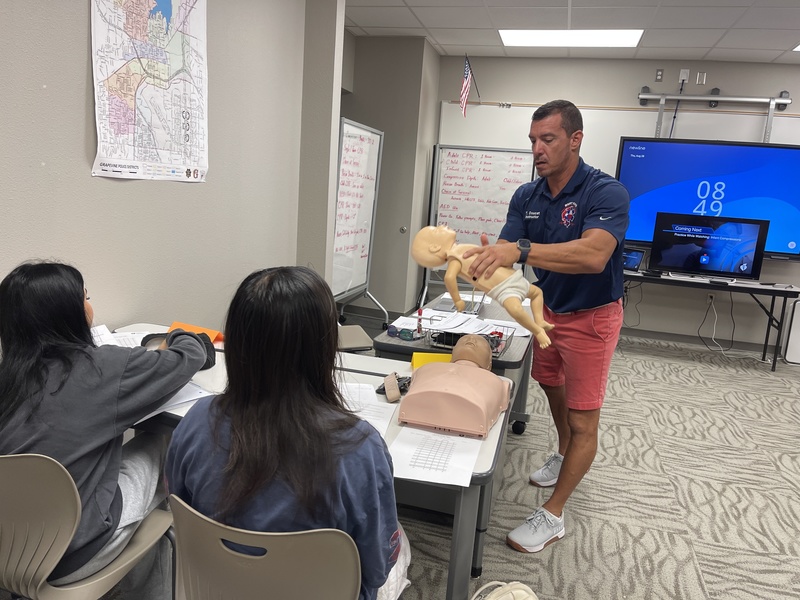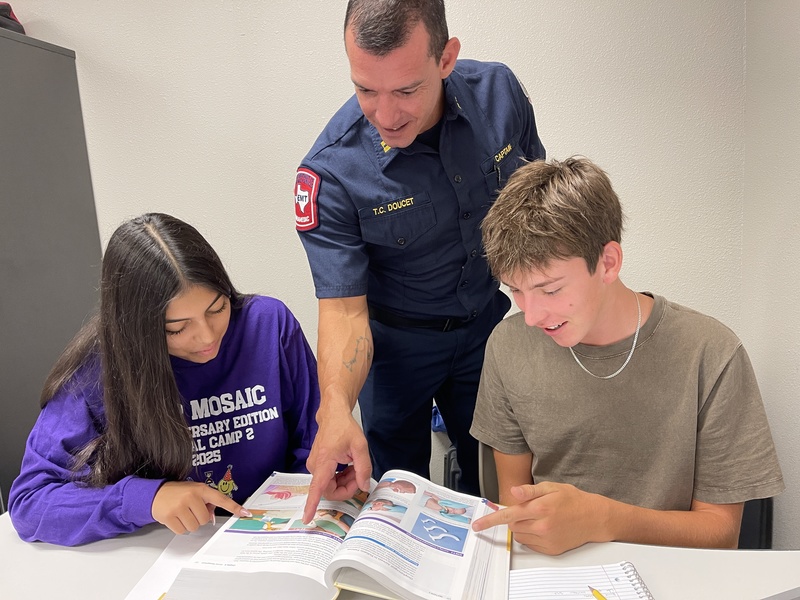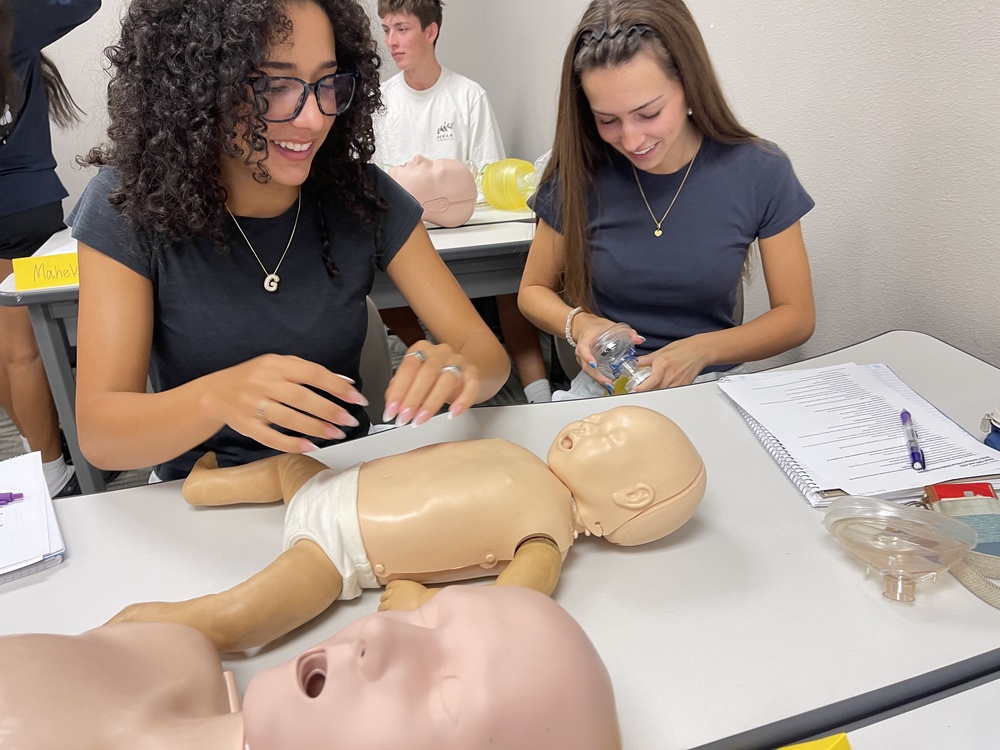GCISD’s Career and Technical Education program launched a new Emergency Medical Technician (EMT) course at the start of the school year that is taught by firefighters from the Grapevine Fire Department. Designed for high school seniors in the health science pathway, the class offers students the opportunity to earn their EMT certification before graduation, preparing them for immediate entry into a fire academy or career.
According to GCISD CTE Director Stephanie Speaks, the idea for the class came in response to student needs.
“We had students who were interested in EMT certification and we had a partnership with a local college for the students to enroll concurrently in their spring semester. The interest there was not very high because classes were during the spring semester of their senior year and at night after they had been at school all day,” Speaks said.
That’s where the Grapevine Fire Department came in.
“This opportunity might open doors for students to be a firefighter, a physician, a nurse or they might want to get their Ph.D. in the medical field," Fire Chief Darrell Brown stated. “This could be the pathway that helps them grow and see what’s possible. This makes them marketable.”
After conversations with GFD, there was agreement “this was an area of need and would also potentially help fill their pipeline,” Speaks added.
Led by Captain Tyson Doucet and a rotating team of five firefighters, all who have their instructor certificate, the course gives students direct access to professionals who live the EMT life every day.
“I think it’s a great opportunity not only for the students, but also for the fire department,” Doucet stated. “It could be the beginning of a ‘grow your own’ program. We get to help shape future EMTs, and maybe even future Grapevine firefighters.”
But it’s not just signing up for the class.
Prior to enrolling in the senior-level course, which is part of CTE’s Health Science Pathway, students have to take medical terminology, health science theory and another health science class, such as anatomy and physiology, clinical rotation, pathophysiology or med-microbiology.
In only the third week of school, students in the new EMT course were intently listening to Captain Doucet as he taught them adult and infant CPR protocols, which included using mock dummies to learn how to check brachial pulses, administer rescue breaths, and perform compressions. Students asked questions, practiced with equipment, and then took a quiz to review understanding.

The learning will also extend beyond the classroom.
Students will also have the opportunity to participate in clinicals, ride-alongs with EMTs, and emergency room rotations. They will also learn to use traditional and newer emergency medical services equipment, which expands their range of knowledge.
“Once they learn the skills in the classroom, they can see real-life experience so they can see the field they might enter,” Doucet emphasized.
Students also have to maintain an average of 75% or higher throughout the entirety of the course and pass approximately eight tests and a final before they can take the National Registry of Emergency Medical Technicians (NREMT) exam. If they pass the national exam, they can take the state test which allows them to work in Texas.

“After the state test, they are hireable right out of high school,” Doucet stated, adding that he looks forward to June 2026 when he will possibly be looking at several more potential EMTs.
For students like Mahek Khawaja, a senior at Colleyville Heritage High School, the course is more than just a class—it’s a stepping stone. “I want to be an EMT during college, then go on to become a physician assistant in an emergency room,” she said. “This class is giving me real-world experience. I already know CPR and rescue breathing from being a lifeguard, but now I’m learning things like using tourniquets and responding to real emergencies.”
Grapevine High School senior Noah Malin is also excited about the program. “Even if I don’t go into medicine full-time, this gives me life-saving skills I can use anywhere,” he said. “Getting my EMT certification in high school is a huge opportunity.”
Once students complete the year-long course and pass the national exam, they will be certified EMTs—ready to work or continue their education.
“This is about giving students career opportunities,” said Speaks. “Whether they go straight to work or use this as a launching pad for medical school, they’re leaving us with real hands-on preparation.”

